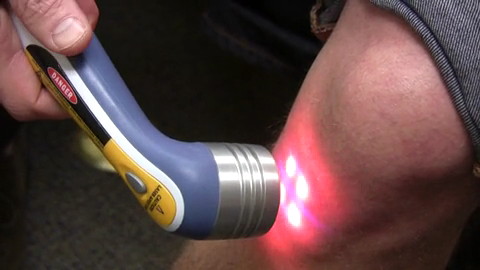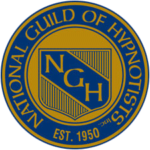
There are over 35 years of worldwide clinical success, 2,500 published papers and 120 randomized, controlled trials for low level laser (AKA cold laser).
This therapeutic modality has a cumulative effect on cells and tissues. Both NASA and the US Defense Advanced Research Projects Agency have engaged in cold laser therapy research over the last decade, with noteworthy success. Below you will find a collection of studies on the use of cold laser for knee pain. The results support the use of LLLT for the treatment of knee (or other) joint pain with success and no side effects.
The studies on this page exclude the field of laser acupuncture. Another article exists that focuses on the topic of acupuncture, electrical acupuncture and laser acupuncture.
In the last 9 years eight systematic reviews have supported LLLT
- American College of Physicians Guidelines include a “strong recommendation” for Low-Level Laser Therapy as a non-invasive Treatments for Acute, Subacute & Chronic Low Back Pain. (2017) Click here
- BMJ LLLT for chronic non-specific low back pain: a systematic review and meta-analysis of randomised controlled trials found “moderate quality of evidence” and “clinically important benefits” in the short term. (2016) Click here
- BMJ sports medicine journal, systematic review of surgical and conservative interventions for frozen shoulder found “strong evidence” for LLLT. (2010) Click here
- The International Association for the Study of Pain (Global Task force on musculoskeletal pain) found “strong evidence” for Low Level Laser Therapy on myofascial pain syndrome. (2010) LLLT-Myofascial-Pain-Syndrome-lASP
- The BMJ clinical evidence recommendations for tennis elbow 2011 now include LLLT click here
- American Physical Therapy Association guidelines recommend LLLT for Achilles tendonitis. (2010) APTA-September2010-Clinical_Guidelines-2
- Lancet systematic review: “LLLT reduces pain immediately after treatment in acute neck pain and up to 22 weeks after completion of treatment in patients with chronic neck pain”. (2009) Click here
- World Health Organisation (Bone and Joint Task Force) for neck pain Low Level Laser Therapy “more effective than no treatment, sham, or alternative interventions” (2008) Click here
PDF Documents:
A Renaissance in Low Level Laser light Therapy
Action of Diode Laser in Orthopaedic and Traumatology
Effects of Light Therapy on Cartilage Repair and Osteoarthritis Healing
Laser Therapy Applications for Osteoarthritis and Chronic Joint Pain Clinical Trial
In Vivo Effects of Low Level Laser Therapy on Inducible Nitric Oxide Synthase
Other Studies:
Low Level Laser Therapy for chronic knee joint pain patients
Takashi Nakamura,1 Satoru Ebihara,2 Ikuko Ohkuni,2 Hideaki Izukura,2 Takashi Harada,corresponding author2 Nobuyuki Ushigome,2 Toshio Ohshiro,3 Yoshiro Musha,4 Hiroshi Takahashi,1 Kazuaki Tsuchiya,1 and Ayako Kubota1 -Laser Ther. 2014 Dec 27; 23(4): 273–277.
Conclusion: The present study demonstrated that 830 nm LLLT was an effective form of treatment for chronic knee pain caused by knee osteoarthritis. Patients were advised to undertake training involving gentle flexion and extension of the knee.
The Effect of Low-Level Laser in Knee Osteoarthritis: A Double-Blind, Randomized, Placebo-Controlled Trial
Béla Hegedűs, M.D.,corresponding author1 László Viharos, Ph.D.,2 Mihály Gervain, Ph.D.,3 and Márta Gálfi, Ph.D.4 Photomed Laser Surg. 2009 Aug; 27(4): 577–584.
Conclusion: Our results show that LLLT reduces pain in KOA and improves microcirculation in the irradiated area.
Review of Literature on Low-level Laser Therapy Benefits for Nonpharmacological Pain Control in Chronic Pain and Osteoarthritis.
Abstract
Introduction • Low-level laser therapy (LLLT) is a form of light therapy that triggers biochemical changes within cells. Photons are absorbed by cellular photoreceptors, triggering chemical alterations and potential biochemical benefits to the human body. LLLT has been used in pain management for years and is also known as cold laser therapy, which uses low-frequency continuous laser of typically 600 to 1000 nm wavelength for pain reduction and healing stimulation. Many studies have demonstrated analgesic and anti-inflammatory effects provided by photobiomodulation in both experimental and clinical trials. Objective • The purpose of this research article was to present a summary of the possible pain management benefits of LLLT. Results • In cold laser therapy, coherent light of wavelength 600 to 1000 nm is applied to an area of concern with hope for photo-stimulating the tissues in a way that promotes and accelerates healing. This is evidenced by the similarity in absorption spectra between oxidized cytochrome c oxidase and action spectra from biological responses to light. LLLT, using the properties of coherent light, has been seen to produce pain relief and fibroblastic regeneration in clinical trials and laboratory experiments. LLLT has also been seen to significantly reduce pain in the acute setting; it is proposed that LLLT is able to reduce pain by lowering the level of biochemical markers and oxidative stress, and the formation of edema and hemorrhage. Many studies have demonstrated analgesic and anti-inflammatory effects provided by photobiomodulation in both experimental and clinical trials. Conclusion • Based on current research, the utilization of LLLT for pain management and osteoarthritic conditions may be a complementary strategy used in clinical practice to provide symptom management for patients suffering from osteoarthritis and chronic pain.
Low Level Laser Therapy (LLLT) for Neck Pain: A Systematic Review and Meta-Regression.
PURPOSE: This systematic review update evaluated low level laser therapy (LLLT) for adults with neck pain.
CONCLUSIONS: We found diverse evidence using LLLT for neck pain. LLLT may be beneficial for chronic neck pain/function/QoL. Larger long-term dosage trials are needed.
Low level laser therapy for sports injuries
Yusuke Morimoto, MD PhD,1 Akiyoshi Saito,1 and Yasuaki Tokuhashi2 Laser Ther. 2013; 22(1): 17–20.
Conclusions: LLLT is an effective treatment for sports injuries, particularly jumper’s knee, tennis elbow and Achilles tendinitis.
The Effect of Low Power Laser Therapy (Cold Laser) on Osteoarthritis of the Knee
Basirnia A., Sadeghipoor G., Esmaeeli Djavid G. et al. Radiol Med (Torino).1998 April; 95 (4):303-9.
…We achieved significant improvement in pain relief and quality of life in 70% of patients.
Positive Outcomes for Infrared diode laser in low reactive-level laser therapy (cold laser) for knee osteoarthritis.
M.A. Trelles, J.Rigau, P. Sala, G. Calderhead, T. Ohshiro. Laser Therapy, (1991): 3(4): 149-153.
82% reported significant removal of pain and recovery of joint mobility. Cold Laser Therapy is concluded to be a safe effective and noninvasive alternative to conventional surgical and medical treatment modalities for DJD patients.
The Influence Of Low Level Infra Red Laser Therapy On The Regeneration Of Cartilage Tissue.
P. Lievens, Ph. Van der Veen.Abstract from Laser Florence 2002. Laser in Medical Science. 2002:17(4).
This study concerns the influence of Laser treatment on the regeneration process of cartilage tissue. There is no need saying that the regeneration of cartilage tissue is a very big problem in rheumatic diseases for example. The lack of blood supply is one of the most important factors involved. Lots of previous publications give us proof of the regeneration capacities of Laser Therapy. In this study we have chosen to experiment on cartilage tissue of the ear of mice….Microscopic as well as histological evaluations were performed on the cartilage regeneration of both ears… After the second day, only in the irradiated group there is a clear activation of the perichondrium (the connective tissue surrounding cartilage).
Beneficial Effects of Laser Therapy in the early stages of Rheumatoid Arthritis onset
Ailioaie C, Lupusoru-Ailioaie LM. Laser Therapy (1991) 11(2); 9-87
The purpose of this study was to determine the effects of laser therapy in pain reduction and /or recovery of patients at the onset of Rheumatoid Arthritis, comparatively with the traditional non-steroidal anti-inflammatory drugs (NSAIDS). Group 1 received laser therapy, Group 2 received placebo laser therapy, Group 3 was treated with only NSAIDS….The overall efficacy rate in these studies was 86% in the first group (who just had laser), 50% in the placebo group, and 40% in the NSAIDS treated group. After 4 months of treatment, our investigations showed the laser therapy group promoted the restoration of function, relieved pain and limited the complications of Rheumatoid Arthritis.
Improvement of Pain and disability in elderly patients with degenerative osteoarthritis of the knee treated with low power light therapy (cold laser therapy)
Stelian J, Gil I , Beni-Habot, Rosenthal M, Abramovici I, Kutok N, Khalil A. Journal American Geriatric Society. (January 1992) 40 (1); 23-26.
Low power light therapy (Cold laser therapy) is effective in relieving pain and disability in degenerative osteoarthritis of the knee.
Cold Lasers, Electrical Stimulation Curb Knee Pain
Boggs, Will MD. BMC Musculoskeletal Disorders. (June 22, 2007).
People with knee pain caused by osteoarthritis may find relief with… electrical nerve stimulation, (and) low-level laser therapy (cold lasers), research shows.
…Electrical stimulation and low-level laser therapy have fewer and less severe side-effects than NSAIDS, and unlike oral drugs they seem to… maintain the positive effect for some weeks after treatment has stopped…
Dr. Bjordal, MD said, “In our opinion, there is currently more short-term potential in refining these safe treatment methods for osteoarthritis than there are for drugs.”
Laser Therapy More Effective than Medication?
…From the findings of a recent Norwegian Health Technology Assessment Report, laser therapy was given the potential of becoming at least twice as effective as NSAIDS(non-steroidal anti-inflammatory drugs), if applied with optimal dose and energy… Although the number of laser trials is still smaller than for NSAIDS, the unequivocal scientific findings so far, has earned cold laser therapy a top spot in levels of evidence and treatment recommendations for knee osteoarthritis issued by the Norwegian Drug Agency.
Non-Drug Alternative for the Management of Chronic Pain
Chow RT, David MA, Armati PJ. 830nm laser irradiation induces varicosity formation, reduces mitochondrial membrane potential and blocks fast axonal flow in small and medium diameter rat dorsal root ganglion neurons: implications for the analgesic effects of 830nm laser: J Peripher Nerv Syst. 2007 Mar; 12(1):28-39.
Most dramatically and recently, Australian researchers have identified a direct effect on the flow of cellular materials down the long axon that makes up the “wiring” of nerve cells. Researchers have discovered that laser-induced neural blockade is a consequence of such changes and provides a mechanism for…laser induced pain relief. The application of low level laser therapy for chronic pain may provide a non-drug alternative for the management of chronic pain.
Breakthrough in the Relief of Chronic Pain Without Drugs!
Goepp, Julius MD. Life Extension. October 2008: 63-70.
Dr. Norquist discusses his clinical outcomes for patients that received low-level laser treatments. “Out of 300 patients more than 90% have reported total pain relief. And more than half the others have experienced at least partial relief of their pain after 10 full treatments. Only about 2-3% of patients have truly had no beneficial effects.”







